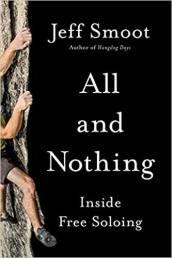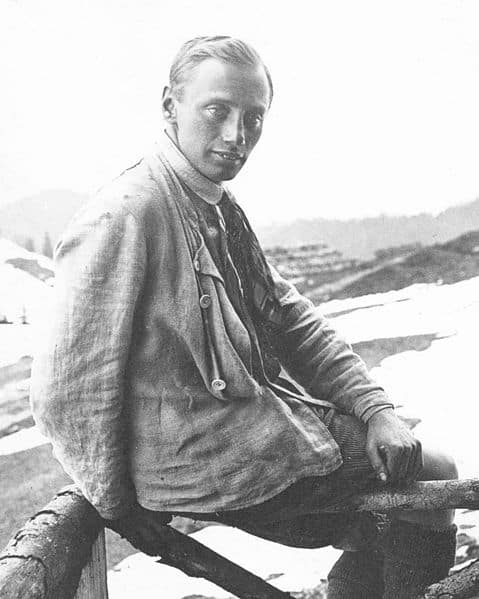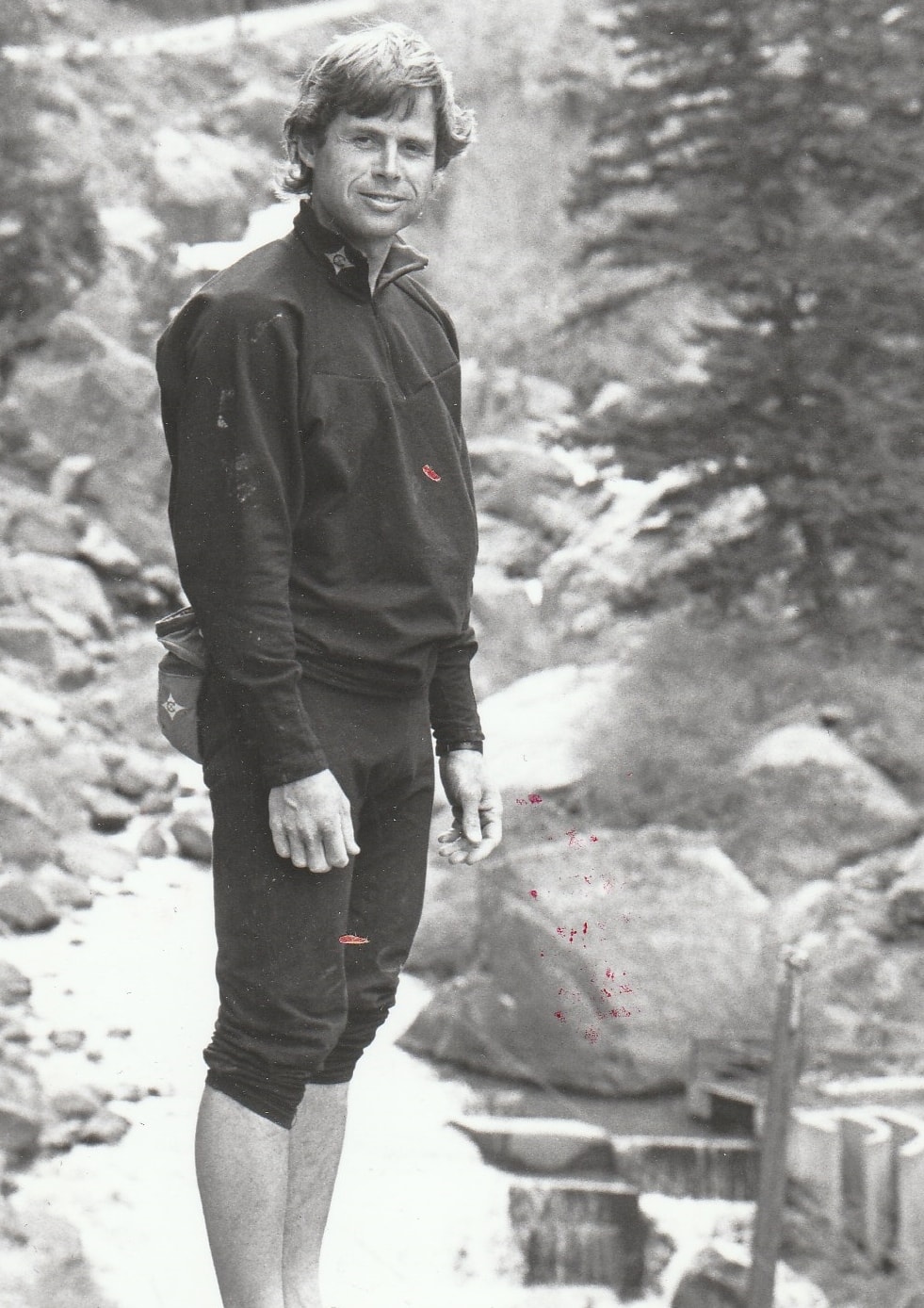Austrian climber Heinz Zak free-soloing in Yosemite, the US, in 2019. (Photo: Angelika Zak via Wikimedia Commons)
Imagine climbing up a sheer rock face, while hanging on a rope about a hundred feet off the ground. There’s silence all around you, the stillness stirred by the occasional gust of wind. The only other sound is that of your breathing — steady, rhythmic and focussed, what the entire effort demands.

There’s the void below the feet to contend with at all times. A sense of comfort, if at all, comes with the experience gained through repetition. Then again, even with all the checks in place, certain things are simply left to chance. A dislodged rock from above or a technical snag in the climbing gear is likely to spell doom in an instant.
Now consider being in the same situation again, only this time around, there is no rope to secure you against a fall. The tiniest error means plummeting all the way down to the bottom of the feature. If you’re really lucky, you’ll live to tell the tale.
The entire idea sounds suicidal, a game of chance like Russian roulette. But in the world of rock climbing, it’s what they call free soloing.
In All and Nothing: Inside Free Soloing, veteran American climber Jeff Smoot tries to understand this form of climbing and what motivates folks from his community to embrace the risks associated with it.
In 2018, the Academy Award-winning documentary, Free Solo, took the daredevilry of climber Alex Honnold to the average household and, perhaps, for the first time, into the mainstream.
But free soloing has been around for decades, mostly spoken of in tightly knit circles and practised by a select few, who’ve been wanting to climb at the absolute limit of their abilities.
Back in the ’60s, free soloing started out with regularity across the US, where a radical breed of climbers looked to push the envelope — as well as each other — while pulling off bold lines, which few could imagine attempting without protection. Some took to climbing alone simply due to a dearth of partners; others pursued it to experience the thrill of climbing as close to the edge as possible.
Unlike the big Everest climbs, there was little in terms of an announcement before the attempt or fanfare by the end of it. At stake were mostly bragging rights and the admiration of a select audience — those who could wrap their heads around the entire idea of free soloing. Most others were left shell-shocked with the visuals that emerged; some just discarded it as plain foolishness.
Over time, free soloists climbed higher and attempted harder routes, redefining the sport and raising the bar amid the fraternity. A few would spend hours practising the climb on ropes, mastering the moves and gaining in confidence before making their attempt. Then, there were others who would simply trust their instinct and get up the wall. Some succeeded, others didn’t. It wasn’t unusual to hear an anguished cry across the valley and at a later hour, find a dead climber at the base of a mountain. Or see a climber triumphantly walk into camp and announce his latest success.
In a few of these accidents, there would be closure in the form of a missing piece of rock, which was likely to have come off during the climb and had let to the fall. But there were unknowns around a lot of the deaths, simply because there would often be no witness at hand. As a result, incidents of bird and bee attacks went undetected, as did the overconfidence and neglect on the part of a climber.
 Austrian alpinist Paul Preuss, in the summer of 1911, summitted the 'impossible climb; with his second ascent of the West Face of the Totenkirchl. (Photo: Wikimedia Commons)
Austrian alpinist Paul Preuss, in the summer of 1911, summitted the 'impossible climb; with his second ascent of the West Face of the Totenkirchl. (Photo: Wikimedia Commons)
Early exponents of free soloing included Paul Preuss, who drew admiration and criticism alike, especially because of the Austrian’s influence on younger climbers in the late 1800s. His successors kept upping the game, gritty rock climbers like Peter Croft, who stirred up a storm after free soloing a 1,000-foot route in Yosemite National Park in 1987, a bold climb that has only been repeated twice since.
 Peter Croft free solo-ed a 1,000-ft route in Yosemite National Park, the US, in 1987. Pictured in Eldorado Canyon in the 1990s. (Photo: Wikimedia Commons)
Peter Croft free solo-ed a 1,000-ft route in Yosemite National Park, the US, in 1987. Pictured in Eldorado Canyon in the 1990s. (Photo: Wikimedia Commons)
So, just what motivates someone to climb without ropes? To understand this impulse, a few took to science to wrap their heads around free soloing. One study put it down to a disorder — compelled by the anxiety to do risky things which once pulled off, gave a feeling of immense satisfaction owing to surmounting and surviving the inherent dangers involved. For a few others, the initial act of confronting their fears transformed into an addiction of sorts, an instant fix of dopamine that brought pleasure, akin to activities such as gambling or shopping. And, then, there were those who considered it to be the purest form of the sport, where they took calculated risks, blocked out uncertainties and tried to attain a state that was as close to perfection as possible.
The book presents a thorough insight into the history of free soloing and is an enlightening read for the non-climber as well. It delves into various cultures around the world where climbing was simply a way of life — from the Thamudic and Nabatean tribes in the barren landscape of southern Jordan, to the Gaelic community on St Kilda, off the coast of Scotland, who were known to climb sea cliffs to scrounge for birds and their eggs. And once it moved into the domain of adventure and exploration, it looks at why mountaineers chose to free solo and bank on their skills and instinct, rather than trust the poor quality of rope at their disposal.
Once free soloing truly set off in the 1970s, the implications were of all kinds — from legends of the sport who died young, to those who survived but never set foot on rock again. Smoot, too, was a practitioner of free soloing during his younger days, but set it all aside when he hung on for dear life and survived. In that moment, he made peace with the fact that you can, perhaps, climb well, but there’s a good chance you will never be flawless.